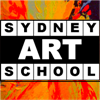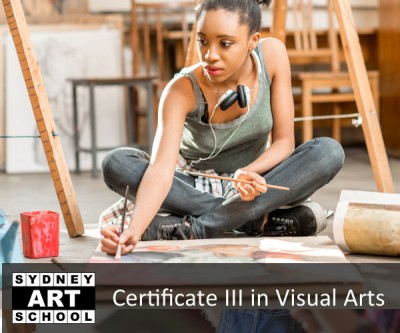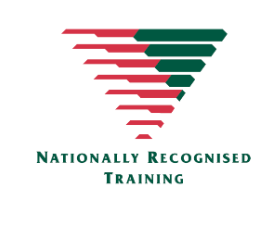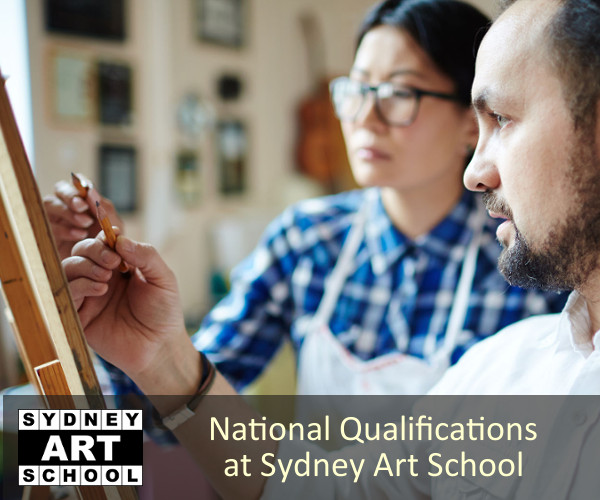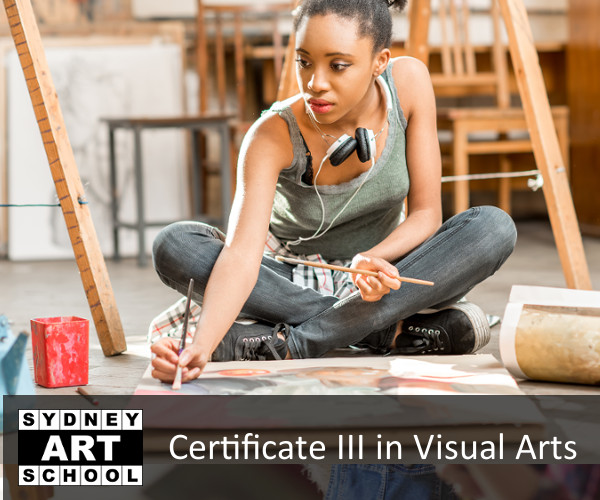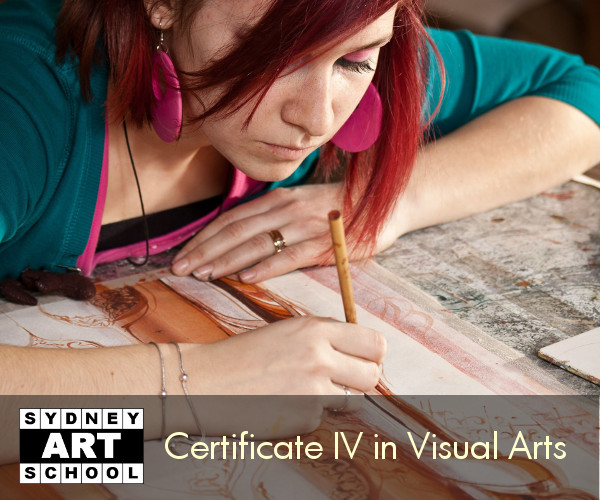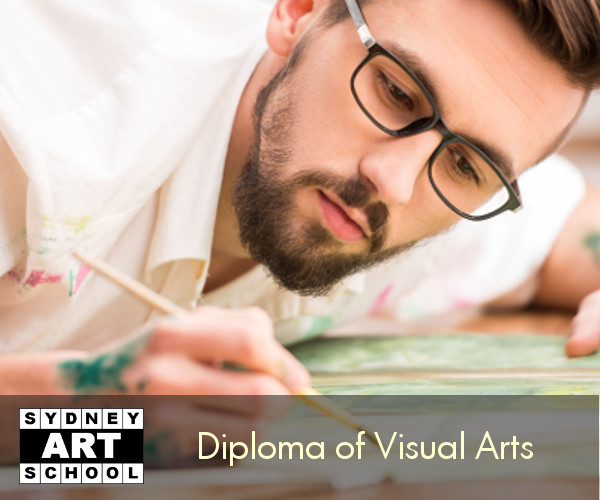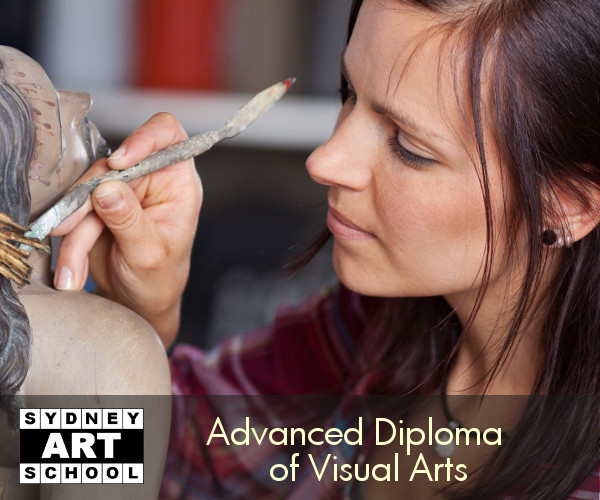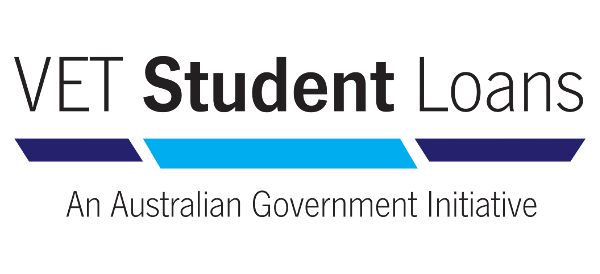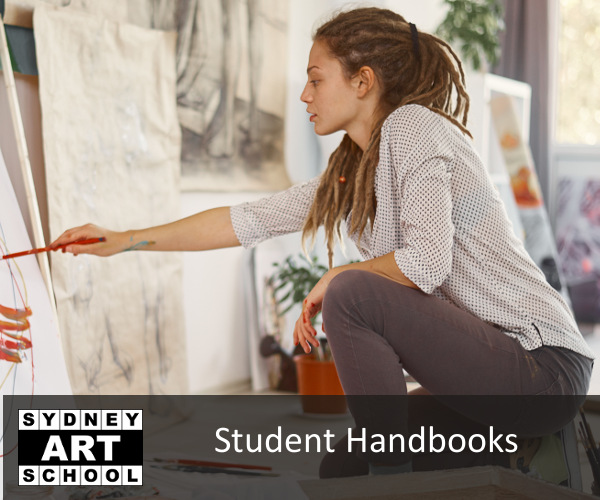Certificate III in Visual Arts (CUA31120)
The Certificate III in Visual Arts at Sydney Art School is available to Australian students from Year 9 in high school and onwards.
NSW Education Standards Authority recognised units that can count towards award of the HSC and a student's Record of School Achievement.
|
NATIONAL CODES CUA31120 |
CRICOS CODE N/A |
|
QUALIFICATION Certificate III in Visual Arts |
INDUSTRY AREA Arts & Design |
|
STUDY MODES Full Time: 2 days per week over 1 year* *4 x 8 week terms per year Part Time: 1 day per week over 2 or 3 years* |
COURSE FEES Full Time: $9800 ($2450 per term) Part Time 2 Years: $10800 ($1350 per term). Part Time 3 Years: $15000 ($1250 per term). |
|
INTERNATIONAL STUDENT ENROLMENT Not Available |
PATHWAYS OPTIONS Diploma of Visual Arts Entry to aligned Bachelor Degrees at Australian universities. |
|
Studio Locations Hornsby, Baulkham Hills |
Description
This qualification reflects the role of individuals who are developing a range of visual art skills and who take responsibility for own outputs in work and learning. Practice at this level is underpinned by the application of introductory art theory and history.
Visual artists may work in their own practice, or in a wide range of contexts across the arts, government, community or commercial organisations.
Entry Requirements
Nil
Qualification Rules and Units
Full details of for this qualification CUA31120-Certificate III in VisualArts pdf File
Full details of the NSW Education Standards Authority requirements are available here ... Visual Arts & Contemporary Craft - Certificate III
Packaging Rules
Total number of units = 12
4 core units plus
8 elective units of which:
4 units must be selected from Group A
2 units must be selected from Group A or B
2 units may be selected from the remaining listed electives or any currently endorsed training package qualification or accredited course at Certificate II, III or IV level.
Elective units must be relevant to the work environment and the qualification, maintain the
integrity of the AQF alignment and contribute to a valid vocational outcome.
Recommended Units of Competency
Core (All 4 Units Required)
| Unit code and title | Status for AQF VET qualification | HSC indicative hours of credit |
|---|---|---|
|
core |
15 |
|
|
core |
20 |
|
|
core |
25 |
|
|
CUARES301 |
core |
20 |
Electives (8 Units Required)
| Unit code and title | Status for AQF VET qualification | HSC indicative hours of credit |
|---|---|---|
|
BSBCRT301 |
elective – Group A |
N/A |
|
elective – Group A |
20 |
|
|
CUADES302 |
elective – Group A |
25 |
|
elective – Group A |
15 |
|
|
elective – Group A |
25 |
|
|
elective – Group A |
25 |
|
|
elective – Group A |
20 |
|
|
elective – Group A |
15 |
|
|
elective – Group A |
25 |
|
|
elective – Group A |
20 |
|
|
elective – Group A |
10 |
|
|
elective – Group A |
25 |
|
|
elective – Group B |
N/A |
Recognition of Prior Learning (RPL) against other units not listed above may be assessed by Sydney Art School on request.
Please contact us if you wish to discuss the options available.
</UoCs>
HSC (VET in Schools) Course options
Unit credit for the Higher School Certificate
Visual Arts and Contemporary Craft HSC VET courses count as Board Endorsed unit credit for
the HSC but do not contribute towards an Australian Tertiary Admission Rank (ATAR). To facilitate flexibility of VET in the HSC, courses may be delivered as Preliminary, as HSC or
as a combination of Preliminary and HSC units.
The HSC credit units will be allocated to students’ Preliminary and/or HSC patterns of study as
required. The pattern of study (NESA course number) entered on Schools Online should reflect the
delivery of the HSC VET course over successive years. For example, delivery of a 240 HSC
indicative hour course over 2 years should be entered as 2 units x 2 years. Students will be
credentialled for the HSC credit units entered each calendar year, provided they have
satisfactorily completed the course requirements for that calendar year as determined by the
school, college or RTO.
The following course options are endorsed by the NSW Education Standards Authority for the cohort commencing 2022
43762 — Visual Arts and Contemporary Craft (120 indicative hours)
Pattern of study: 2 units x 1 year
Enter this NESA course number for either Year 11 (Preliminary) or Year 12 (HSC) on Schools
Online.
43763 — Visual Arts and Contemporary Craft (240 indicative hours)
Pattern of study: 2 units x 2 years
Enter this NESA course number for both Year 11 (Preliminary) and Year 12 (HSC) on Schools
Online.
HSC course requirements
Visual Arts and Contemporary Craft (120 indicative hours)
- the possible qualification outcome is a Statement of Attainment towards CUA31120 Certificate III in Visual Arts
- accredited for a total of 2 units at the Preliminary and/or HSC level
- attempt all core and/or elective units of competency to a minimum of 120 HSC indicative hours
Visual Arts and Contemporary Craft (240 indicative hours)
- the possible qualification outcome is CUA31120 Certificate III in Visual Arts
- accredited for a total of 4 units at the Preliminary and/or HSC level
- attempt all core units of competency (totalling 75 HSC indicative hours) and
- elective units of competency to a minimum of 165 HSC indicative hours and to meet qualification packaging rules.
Students in Years 11 and 12 (Stage 6)
This is a Stage 6 VET Board Endorsed course
Students in Years 9 and 10 (Stage 5)
In certain circumstances students in Years 9 and 10 (Stage 5) may access Stage 6 VET courses. Further information is available in the Stage 5 VET section.
Employability Skills Summary
The following table contains a summary of the employability skills as identified by the visual arts, craft and design industries for this qualification.
|
Employability skill |
Industry/enterprise requirements for this qualification |
|
Communication |
|
|
Teamwork |
|
|
Problem-solving |
|
|
Initiative and enterprise |
|
|
Planning and organising |
|
|
Self-management |
|
|
Learning |
|
|
Technology |
|
General Course Information
High School Student Course Options Information
Full details of the NSW Education Standards Authority requirements are available here ... Visual Arts & Contemporary Craft - Certificate III
